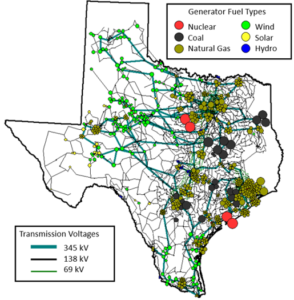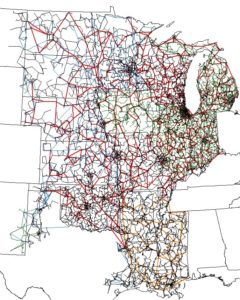ARPA-E’s Performance-based Energy Resource Feedback, Optimization, and Risk Management (PERFORM) program seeks to develop new grid management systems that represent the relative delivery risk of individual electricity generation resources and balance the collective risk of all assets across the grid. The program has funded twelve project teams across the country to build software platforms that optimize grid management as the penetration of variable renewable resources continues to increase. However, the difficulty of obtaining and sharing sensitive transmission grid data has historically presented a challenge for innovation.
To overcome this challenge, PERFORM also funded leading power systems modelling groups at Lawrence Livermore National Laboratory, National Renewable Energy Laboratory, Princeton University, Texas A&M University, and the University of Wisconsin to generate realistic synthetic datasets for the power grid. These datasets served as a basis for the twelve optimization teams to develop their platforms.
For the PERFORM Project, the Texas A&M University Team created a 6700 bus grid covering the ERCOT footprint and a 23,600 bus grid covering the US Midwest. The detailed data, reliability and resilience of the grids were improved during the project. The Texas A&M University PERFORM team was led by Professor Tom Overbye. The Texas 7k case was created by Prof. Adam Birchfield’s research group, and the Midwest 24k case was created by Dr. Farnaz Safdarian with assistance from several graduate students.
More information about the synthetic grids creation and validation can be found in the references. Datasets from other PERFORM teams can be found here.
Texas7KThis 6717-bus network covers the geographic footprint of the electric reliability council of Texas (ERCOT) and serves 74 GW of peak load across the majority of the U.S. state of Texas. |
 |
Midwest24KThis 23,643-bus network covers the geographic footprint of the combined systems of the Mid-Continent Independent System Operator (MISO) and the Southwest Power Pool (SPP) and serves up to 202 GW of peak load across multiple central U.S. states. Annual load scenarios in bus level are included in scenario data. Download links: 2022 September 23 version (latest) 2022 Jun 2 version |
 |
